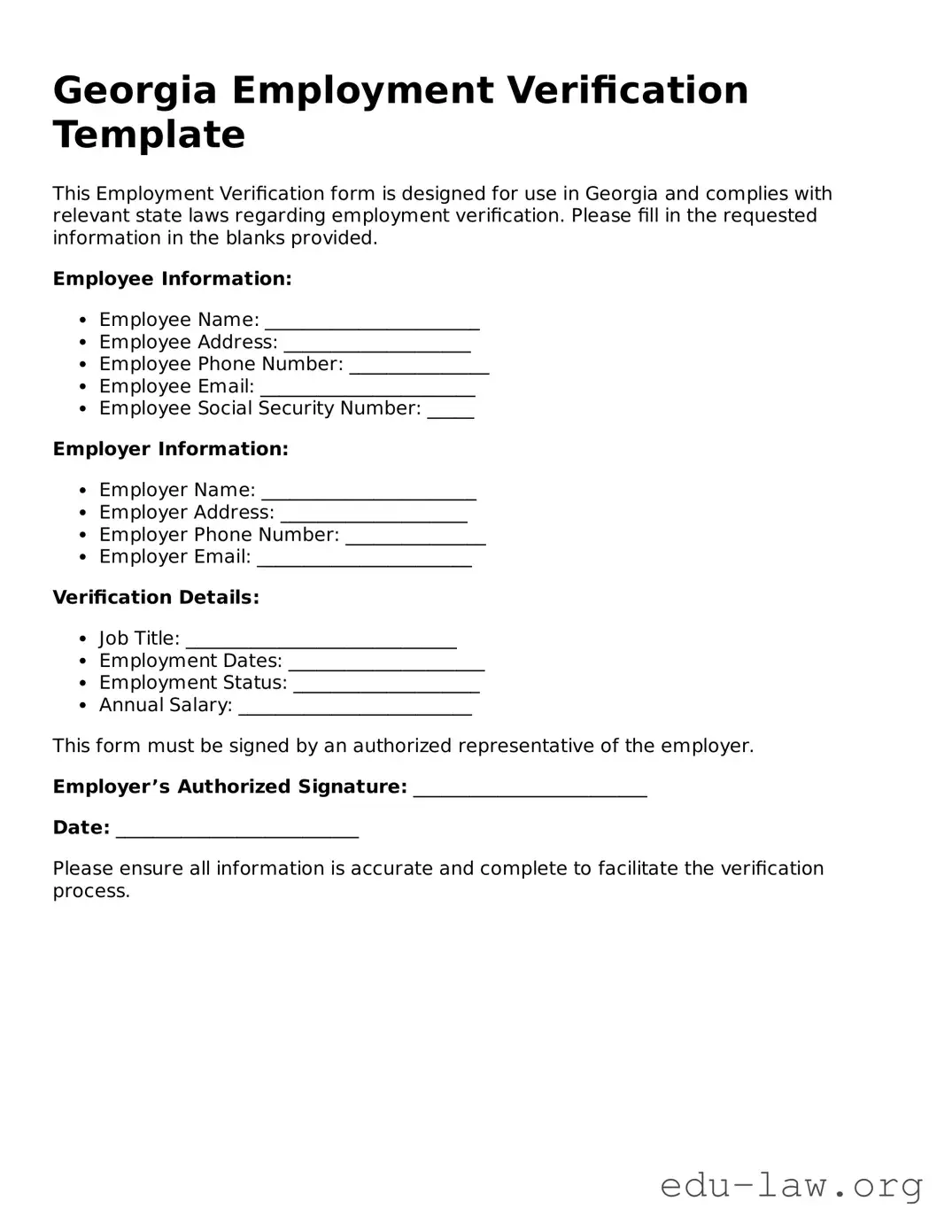What is the Georgia Employment Verification form?
The Georgia Employment Verification form is a document used to confirm an individual's employment status and details with a specific employer in the state of Georgia. This form may be required for various purposes, including loan applications, rental agreements, or state assistance programs.
Who needs to fill out the Employment Verification form?
Typically, the employee requesting the verification will fill out the form. The employer must then complete and sign the document to confirm the details provided by the employee. Both parties play a crucial role in ensuring its accuracy.
What information is required on the form?
The form generally requires the employee's name, position, dates of employment, and salary. Employers may also need to include their contact information and a signature to validate the form. Each field must be completed accurately to avoid any delays in processing.
How does an employee obtain the Employment Verification form?
An employee can usually obtain the Employment Verification form from their employer’s human resources department or download it from the Georgia Department of Labor's website. It is advisable for the employee to check with their HR department regarding the correct version of the form.
Is there a fee associated with obtaining the Employment Verification form?
No, there is typically no fee for completing or obtaining the Georgia Employment Verification form. However, additional fees may apply if the employer requires other documents or verification methods.
How long does it take to process the Employment Verification form?
The time needed to process the form can vary. Generally, once submitted to the employer, it may take a few business days for verification to be completed. Prompt submission can help ensure a quicker turnaround.
What can an employee do if their employer refuses to complete the form?
If an employer declines to complete the Employment Verification form, the employee should request a written explanation for this decision. If necessary, the employee can escalate the matter to higher management or seek external assistance, such as from the state labor department.
Are there any consequences of falsifying information on the form?
Falsifying information on an employment verification form can lead to severe consequences, including legal repercussions. This can affect an individual's job security, reputation, and future employment opportunities. It is crucial to provide truthful and accurate information.
Where should the completed Employment Verification form be sent?
The completed form should be returned to the individual who requested it, usually the employee or an entity requiring verification, such as a bank or rental agency. Ensuring that all parties receive a copy is essential for record-keeping purposes.
